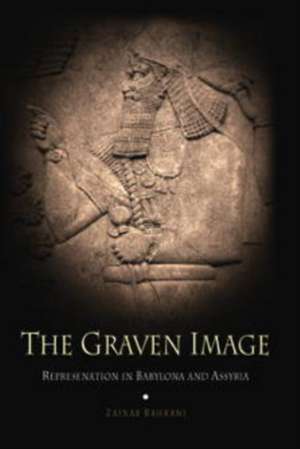The Graven Image – Representation in Babylonia and Assyria: Archaeology, Culture, and Society
Autor Zainab Bahranien Limba Engleză Hardback – 20 iul 2003
Preț: 465.14 lei
Nou
Puncte Express: 698
Preț estimativ în valută:
89.01€ • 95.18$ • 74.21£
89.01€ • 95.18$ • 74.21£
Carte tipărită la comandă
Livrare economică 18 aprilie-02 mai
Preluare comenzi: 021 569.72.76
Specificații
ISBN-13: 9780812236484
ISBN-10: 0812236483
Pagini: 256
Dimensiuni: 161 x 237 x 25 mm
Greutate: 0.5 kg
Ediția:New.
Editura: MT – University of Pennsylvania Press
Seria Archaeology, Culture, and Society
Locul publicării:United States
ISBN-10: 0812236483
Pagini: 256
Dimensiuni: 161 x 237 x 25 mm
Greutate: 0.5 kg
Ediția:New.
Editura: MT – University of Pennsylvania Press
Seria Archaeology, Culture, and Society
Locul publicării:United States
Notă biografică
Zainab Bahrani
Cuprins
List of Illustrations Introduction
1. The Aesthetic and the Epistemic: Race, Culture, and Antiquity 2. The Extraterrestrial Orient: Despotic Time and the Time of the Despots 3. Ethnography and Mimesis: Representing Aesthetic Culture 4. Being in the Word: Of Grammatology and Mantic 5. Salmu: Representation in the Real 6. Decoys and Lures: Substitution and the Uncanny Double of the King 7. Presence and Repetition: The Altar of Tukulti-Ninurta 8. Conclusion: Image, Text, and Différance, or from Difference to Différance
Notes Bibliography Index Acknowledgments
1. The Aesthetic and the Epistemic: Race, Culture, and Antiquity 2. The Extraterrestrial Orient: Despotic Time and the Time of the Despots 3. Ethnography and Mimesis: Representing Aesthetic Culture 4. Being in the Word: Of Grammatology and Mantic 5. Salmu: Representation in the Real 6. Decoys and Lures: Substitution and the Uncanny Double of the King 7. Presence and Repetition: The Altar of Tukulti-Ninurta 8. Conclusion: Image, Text, and Différance, or from Difference to Différance
Notes Bibliography Index Acknowledgments

























